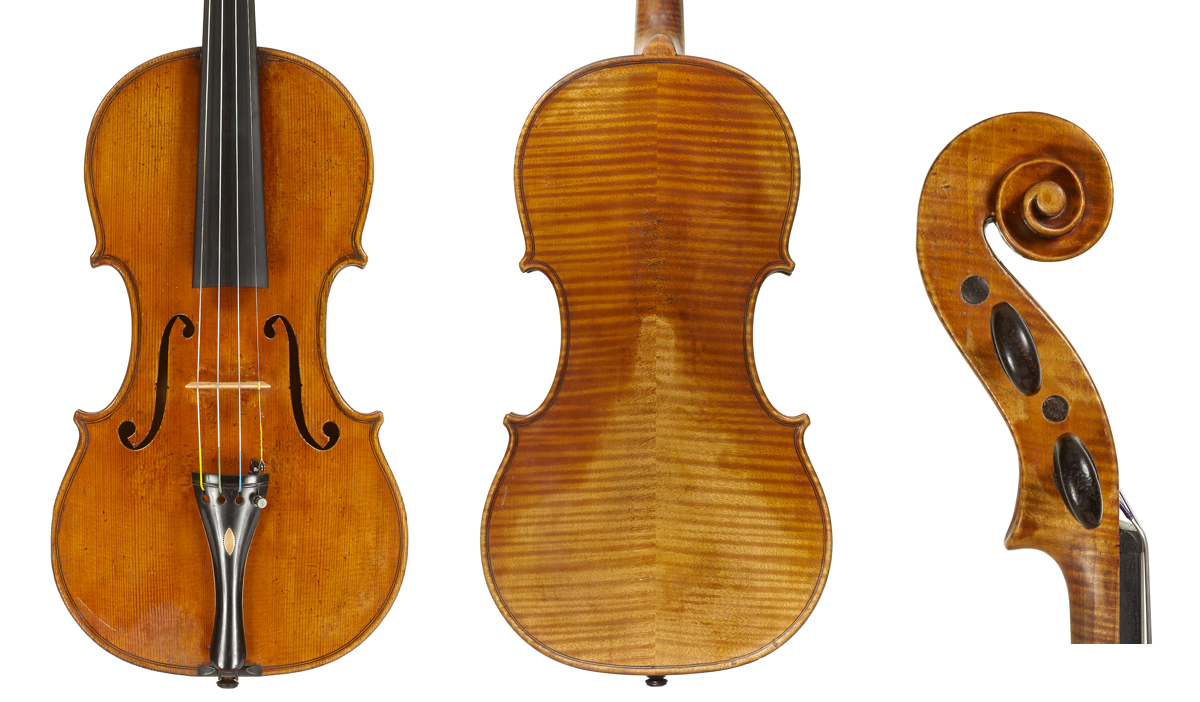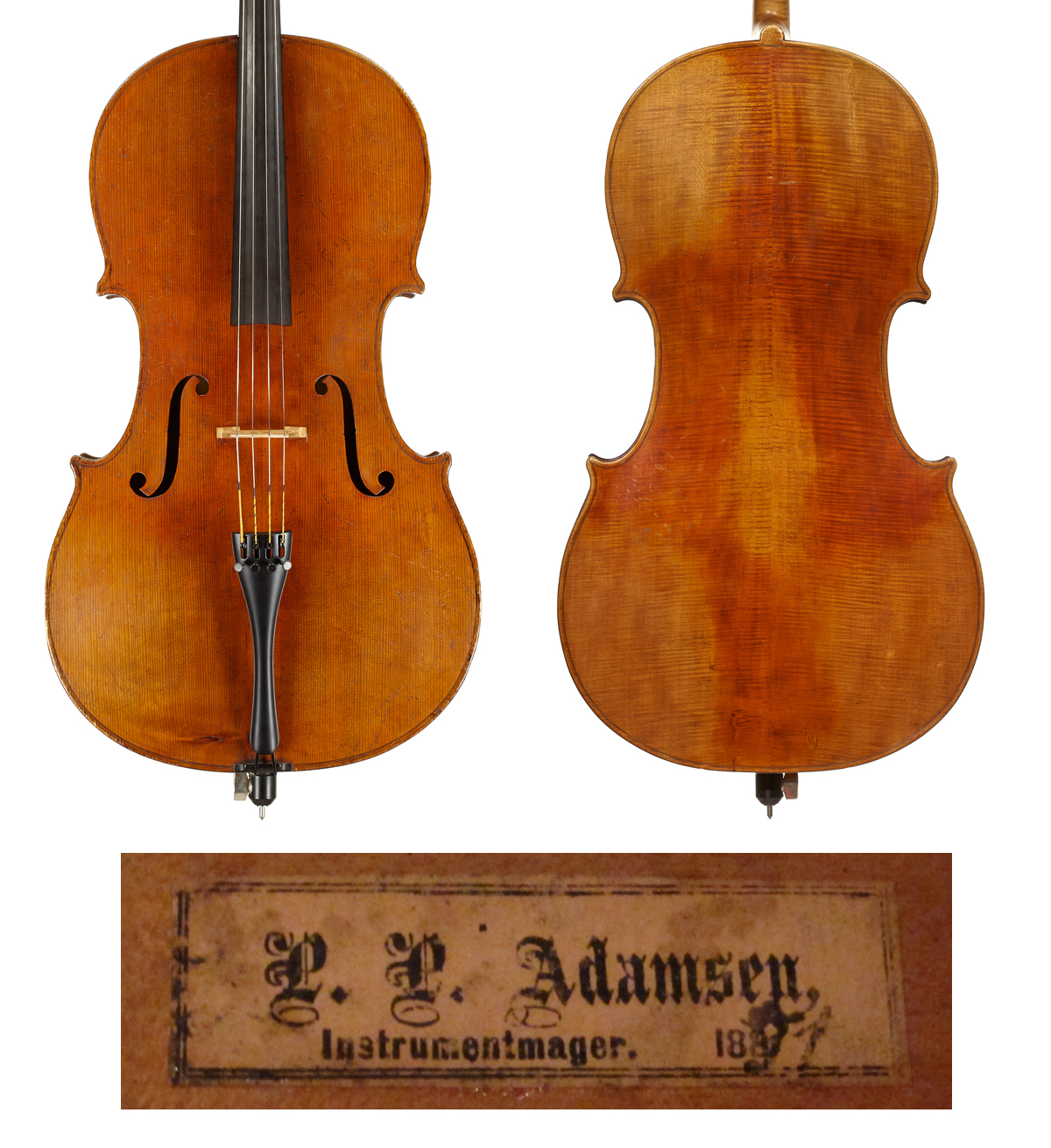The two 19th-century Danish instruments featured here are fine examples of the work produced by Copenhagen’s violin makers. It is easy to overlook the violin making traditions of cities such as Copenhagen that produced only a few known makers, usually because their work is seldom seen. However, some charming examples exist from late 19th-century Copenhagen, which enjoyed a blossoming music scene. The 1815 Musikforeningen faced competition from the Koncertforeningen from 1874 and the Royal Orchestra from 1883, and together they brought increasing demand for the expertise of violin makers. From the beginning of the century Copenhagen had nurtured a group of skilled luthiers, mostly engaged in repair and maintenance of imported instruments, but able to produce their own outstanding work when required.
Among these, Niel Lund was one of the first early 19th-century bow makers outside Paris to follow the Tourte model. A strong French connection is found in Lund’s pupil Thomas Jacobsen, who traveled to Paris, where he worked for a short while in the workshop of J.B. Vuillaume. In turn his pupil Guldbrand Enger made the same journey, returning to succeed Jacobsen as instrument maker to the Danish Court.
Guldbrand Enger violin, 1870
The violin by Guldbrand Enger shown here was made in 1870 and demonstrates a familiarity with the Vuillaume workshop, substantiating his training there. The antiquing on the back is reminiscent of Honoré Derazey, another of Vuillaume’s pupils; the varnish is rich but slightly matt in appearance; and the scroll is excellently carved but slightly more stiff in aspect than a Vuillaume, with crisp chamfers in contrast to the rubbed and softened look that Vuillaume preferred.
The pattern for the violin is instantly recognisable as Vuillaume’s copy of the ‘Cannon’ Guarneri, and it is produced with an enormous amount of sensitivity towards the Vuillaume violins that Enger must have been familiar with and perhaps even helped to make. Tiny aspects in the cutting of the soundholes and the thinness of the corners all give the violin a slightly more delicate appearance than Vuillaume’s copies, and inadvertently provide a sense of compactness that is found in many ‘del Gesù’ violins.
P.P. Adamsen cello, 1891
This cello was made in Copenhagen 21 years later by Peter Petersen Adamsen. Although there is no proven connection between these two makers it is clear they share the same distinctive varnish and high quality of workmanship. Adamsen’s work also appears to be highly influenced by Vuillaume.
The cello is of a large size with a back length of 77 cm and is a copy of a late 17th-century Stradivari cello. There are odd economies in the way that the cello is made – the corners are rounded dramatically and the edgework is hasty and rough. By contrast, the arching is well observed: Stradivari’s cello arching is unexpectedly flat and few 19th-century makers outside of Vuillaume’s workshop really understood how to capture it, choosing instead a more organic and curvaceous form.
The steady supply of new and old instruments from France probably explains the rarity of Danish instruments, and those that exist are profoundly influenced by the great Parisian makers. As the production of Danish makers was never very prolific they remain quite rare – and a delight to discover.
Tarisio sold these two 19th-century Danish instruments in 2013. Read about the history of violin making in Copenhagen.

